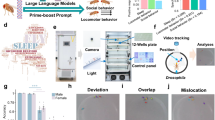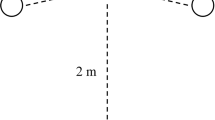Abstract
The social intelligence hypothesis proposes that the challenges of complex social life bolster the evolution of intelligence, and accordingly, advanced cognition has convergently evolved in several social lineages. Lions (Panthera leo) offer an ideal model system for cognitive research in a highly social species with an egalitarian social structure. We investigated cognition in lions using a novel resource task: the suspended puzzle box. The task required lions (n = 12) to solve a novel problem, learn the techniques used to solve the problem, and remember techniques for use in future trials. The majority of lions demonstrated novel problem-solving and learning; lions (11/12) solved the task, repeated success in multiple trials, and significantly reduced the latency to success across trials. Lions also demonstrated cognitive abilities associated with memory and solved the task after up to a 7-month testing interval. We also observed limited evidence for social facilitation of the task solution. Four of five initially unsuccessful lions achieved success after being partnered with a successful lion. Overall, our results support the presence of cognition associated with novel problem-solving, learning, and memory in lions. To date, our study is only the second experimental investigation of cognition in lions and further supports expanding cognitive research to lions.



Similar content being viewed by others

References
Anderson JR (2007) Animal behavior: tolerant primates cooperate best. Curr Biol 17:R242–R244. doi:10.1016/j.cub.2007.02.005
Bailey I, Myatt JP, Wilson AM (2012) Group hunting within the Carnivora: physiological, cognitive and environmental influences on strategy and cooperation. Behav Ecol Sociobiol 67:1–17. doi:10.1007/s00265-012-1423-3
Benson-Amram S, Holekamp KE (2012) Innovative problem solving by wild spotted hyenas. Proc Biol Sci R Soc 279:4087–4095. doi:10.1098/rspb.2012.1450
Benson-Amram S, Heinen VK, Gessner A, Weldele ML, Holekamp KE (2014) Limited social learning of a novel technical problem by spotted hyenas. Behav Process 109:111–120. doi:10.1016/j.beproc.2014.09.019
Benson-Amram S, Dantzer B, Stricker G, Swanson EM, Holekamp KE (2016) Brain size predicts problem-solving ability in mammalian carnivores. Proc Natl Acad Sci USA. doi:10.1073/pnas.1505913113
Borrego N, Gaines M (2016) Social carnivores outperform asocial carnivores on an innovative problem. Anim Behav 114:21–26. doi:10.1016/j.anbehav.2016.01.013
Byrne RW, Bates LA (2010) Primate social cognition: uniquely primate, uniquely social, or just unique? Neuron 65:815–830. doi:10.1016/j.neuron.2010.03.010
Byrne RW, Whiten A (1988) Machiavellian intelligence: social expertise and the evolution of intellect in monkeys, apes, and humans. Clarendon Press, Oxford
Dindo M, Whiten A, de Waal FB (2009) Social facilitation of exploratory foraging behavior in capuchin monkeys (Cebus apella). Am J Primatol 71:419–426. doi:10.1002/ajp.20669
Drea CM, Carter AN (2009) Cooperative problem solving in a social carnivore. Anim Behav 78:967–977. doi:10.1016/j.anbehav.2009.06.030
Dunbar RI, Bever J (1998) Neocortex size predicts group size in carnivores and some insectivores. Ethology 104:695–708
Dunbar RI, Shultz S (2007) Evolution in the social brain. Science 317:1344–1347. doi:10.1126/science.1145463
Emery NJ, Clayton NS (2004) The mentality of crows: convergent evolution of intelligence in corvids and apes. Science 306:1903–1907
Galef BG Jr, Giraldeau LA (2001) Social influences on foraging in vertebrates: causal mechanisms and adaptive functions. Anim Behav 61:3–15. doi:10.1006/anbe.2000.1557
Greco BJ, Brown TK, Andrews JR, Swaisgood RR, Caine NG (2013) Social learning in captive African elephants (Loxodonta africana africana). Anim Cogn 16:459–469. doi:10.1007/s10071-012-0586-7
Grinnell J (2002) Modes of cooperation during territorial defense by African lions. Hum Nat 13:85–104
Grinnell J, McComb K (1995) Maternal grouping as a defense against infanticide by males: evidence from field playback experiments on African lions. Behav Ecol 7:55–59
Hare B (2007) From nonhuman to human mind current directions in phsychological. Science 16:60–64
Hare B, Tomasello M (2005) The emotional reactivity hypothesis and cognitive evolution. Trends Cogn Sci 9:464–465. doi:10.1016/j.tics.2005.08.010
Hare B, Melis AP, Woods V, Hastings S, Wrangham R (2007) Tolerance allows bonobos to outperform chimpanzees on a cooperative task. Curr Biol CB 17:619–623. doi:10.1016/j.cub.2007.02.040
Hayward MW, Kerley GIH (2008) Prey preferences and dietary overlap amongst Africa’s large predators. S Afr J Wildl Res 38:93–108. doi:10.3957/0379-4369-38.2.93
Healy SD, Bacon IE, Haggis O, Harris AP, Kelley LA (2009) Explanations for variation in cognitive ability: behavioural ecology meets comparative cognition. Behav Process 80:288–294. doi:10.1016/j.beproc.2008.10.002
Heinsohn R, Packer C (1995) Complex cooperative strategies in group-territorial African lions. Science 269:1260–1262
Hermann E, Hare B, Call J, Tomasello M (2010) Differences in the cognitive skills of bonobos and chimpanzees. PLoS ONE 5:e12438. doi:10.1371/journal.pone.0012438.t001
Heyes CM (1994) Social learning in animals: categories and mechanisms. Bio Rev 69:207–231
Holekamp KE, Sakai ST, Lundrigan BL (2007a) The spotted hyena (Crocuta crocuta) as a model system for study of the evolution of intelligence. J Mammal 83:545–554
Holekamp KE, Sakai ST, Lundrigran BL (2007b) The spotted hyena (Crocuta crocuta) as a model system for study of the evolution of intelligence. J Mammal 88:545–554
Humphrey NK (1976) The social function of intellect. In: Bateson PPG, Hinde RA (eds) Growing points in ethology. Cambridge University Press, Cambridge
Jolly A (1964) Prosimians’ manipulation of simple object problems. Anim Behav 12:560–570
Jolly A (1966) Lemur social behavior and primate intelligence. Science 153:501–506
Karanth KU, Sunquist ME (2000) Behavioural correlates of predation by tiger (Panthera tigris), leopard (Panthera pardus) and dhole (Cuon alpinus) in Nagarahole. India J Zool Lond 250:255–265
Marino L (2002) Convergence of complex cognitive abilities in cetaceans and primates. Brain Behav Evol 59:21–32
Mccomb K, Pusey A, Packer C, Grinnell J (1993) Females lions can identify potentially infanticidal males from their roars. Proc Biol Sci R Soc 252:59–64
McLean AN (2001) Cognitive abilities-the result of selective pressures on food acquisition? Appl Anim Behav Sci 71:241–258
Mosser AA, Kosmala M, Packer C (2015) Landscape heterogeneity and behavioral traits drive the evolution of lion group territoriality. Behav Ecol 26:1051–1059. doi:10.1093/beheco/arv046
Packer C (1986) The ecology of sociality in felids. In: Rubenstein DI, Wrangham RW (eds) Ecological aspects of social evolution: birds and mammals. Princeton University Press, Princeton
Packer C, Pusey A (1994) Non-offspring nursing in social carnivores: minimizing the costs. Behav Ecol 5:363–374
Packer C, Pusey A (1997) Divided we fall: cooperation among lions. Sci Am 256:32–39
Packer C, Pusey A, Eberly LE (2001) Egalitarianism in female African lions. Science 293:690–693
Pickett STA, Cadenasso ML, Benning TL (2003) Biotic and abiotic variability as key determinants of savanna heterogeneity at multiple spatio-temporal scales. In: du Toit JT, Rogers KH, Biggs HC (eds) The Kruger experience: ecology and management of Savanna heterogeneity. Island Press, Washington, pp 22–40
Plotnik JM, Lair R, Suphachoksahakun W, de Waal FB (2011) Elephants know when they need a helping trunk in a cooperative task. Proc Natl Acad Sci USA 108:5116–5121. doi:10.1073/pnas.1101765108
SAS (2012) JMP Version 10. SAS Institute Inc., Cary
Schaller GB (1972) The Serengeti lion: a study of predator-prey relations. University of Chicago Press, Chicago
Stander PE (1992a) Cooperative hunting in lions: the role of the individual. Behav Ecol Sociobiol 29:445–454
Stander PE (1992b) Foraging dynamics of lions in semi-arid environment. Can J Zool 70:8–21
van de Waal E, Renevey N, Favre CM, Bshary R (2010) Selective attention to philopatric models causes directed social learning in wild vervet monkeys. Proc Biol Sci R Soc 277:2105–2111. doi:10.1098/rspb.2009.2260
van Horik JO, Clayton NS, Emergy NJ (2012) Convergent evolution of cognition in corvids, apes, and other animals. In: Vonk J, Shackelford TK (eds) Oxford handbook of comparative evolutionary psychology. Oxford University Press, New York, pp 80–96
Whiten AB (1997) Machiavellian intelligence II: extensions and evaluations. Cambridge University Press, Cambridge
Zajonc Rb (1965) Social facilitation. Science 149:269–274
Acknowledgments
We would like to thank Lion Country Safari for their support and funding of this project. We would also like to thank the University of Miami for funding.
Author information
Authors and Affiliations
Corresponding author
Electronic supplementary material
Below is the link to the electronic supplementary material.
Supplementary material 1 (MP4 52793 kb)
Rights and permissions
About this article
Cite this article
Borrego, N., Dowling, B. Lions (Panthera leo) solve, learn, and remember a novel resource acquisition problem. Anim Cogn 19, 1019–1025 (2016). https://doi.org/10.1007/s10071-016-1009-y
Received:
Revised:
Accepted:
Published:
Issue Date:
DOI: https://doi.org/10.1007/s10071-016-1009-y



